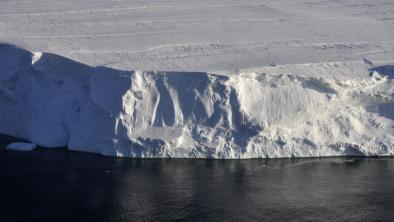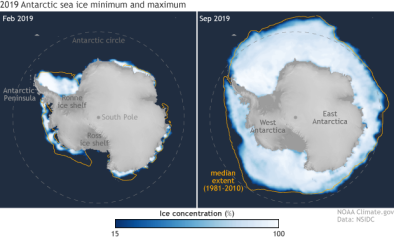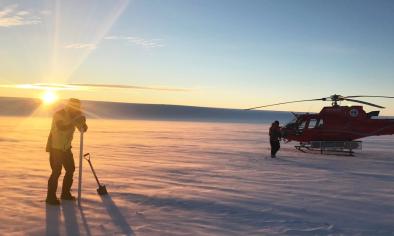Science Source
Localized rapid warming of West Antarctic subsurface waters by remote winds
- States that the highest rates of Antarctic glacial ice mass loss are occurring to the west of the Antarctica Peninsula in regions where warming of subsurface continental shelf waters is also largest; however, the physical mechanisms responsible remain unknown
- Shows how localized changes in coastal winds off East Antarctica can produce significant subsurface temperature anomalies (>2 °C) around much of the continent
- Demonstrates how coastal-trapped barotropic Kelvin waves communicate the wind disturbance around the Antarctic coastline
- Finds that the warming is focused on the western flank of the Antarctic Peninsula because the circulation induced by the coastal-trapped waves is intensified by the steep continental slope there, and because of the presence of pre-existing warm subsurface water offshore
- Finds that the adjustment to the coastal-trapped waves shoals the subsurface isotherms and brings warm deep water upwards onto the continental shelf and closer to the coast
- Result demonstrates the vulnerability of the West Antarctic region to a changing climate
Related Content
Headline

Jan 29, 2020 | BBC News
Journey to the 'doomsday glacier'
Headline

Nov 22, 2019 | NOAA Climate.gov
Understanding climate: Antarctic sea ice extent
Headline

Mar 26, 2019 | The Guardian
Australian researchers find huge lakes beneath largest east Antarctic glacier
Science Source
| Geophysical Research Letters
Mass Loss of Totten and Moscow University Glaciers, East Antarctica, Using Regionally Optimized GRACE Mascons
Yara Mohajerani, Isabella Velicogna, Eric Rignot


